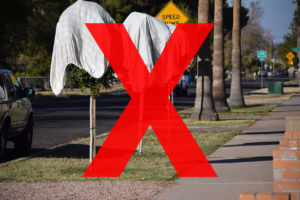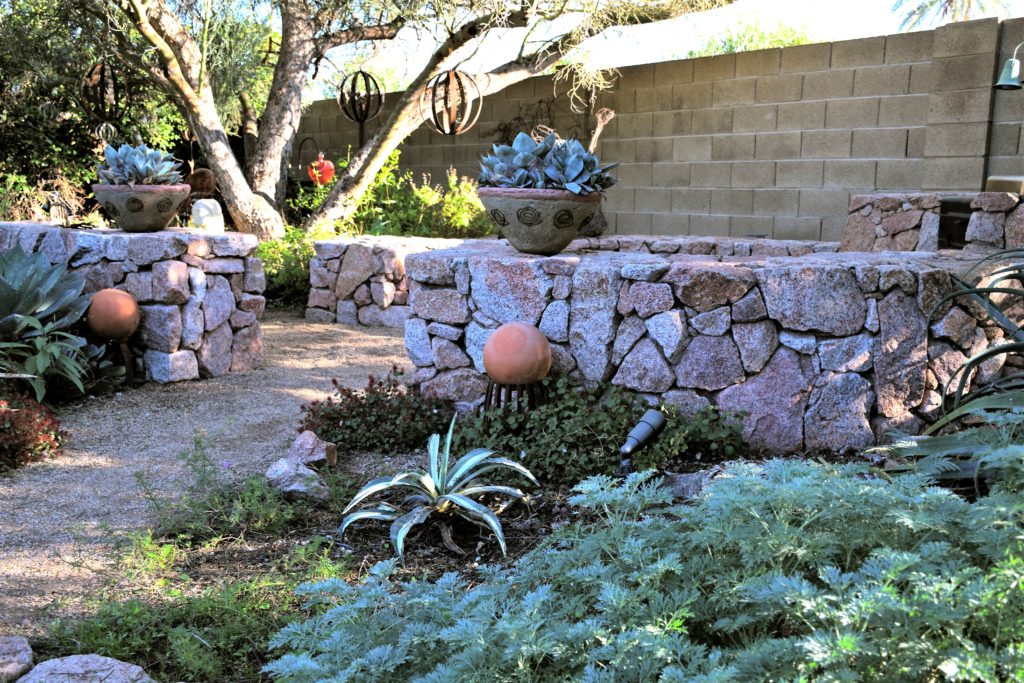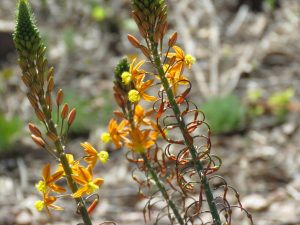We have experienced above-average temperatures throughout the fall season, but now with the arrival of December and with the start of meteorological winter, temperatures should begin to cool. Meaning it’s a perfect time to get your yard ready for you and your winter guests to enjoy. Plus, correctly maintaining your desert-adapted yard during these chillier months will also help make sure it is in prime condition come spring.
There are a variety of ways you can ensure your landscape remains healthy and water efficient throughout the winter season.
Winter Watering
Water your trees and plants deeply but far less frequently during the winter months. Too much water isn’t healthy for desert-adapted trees and plants. The most straightforward rule is to water to a depth of three feet for trees, two feet for shrubs, one foot for groundcover, and a half foot for winter ryegrass. You can measure the depth by pushing a soil probe or using a dowel rod sharpened a bit on the end into the ground until it meets resistance.
It’s easy to know when to water your trees and plants by simply texting WHENTOWATER to 33222. You will then receive a text message on the first of each month with a watering tip and a link to our smart landscape watering page that shows you how often to water everything in your yard from month to month.
Also, remember that when we get a heavy rainstorm or two, take advantage of the moisture and turn off your irrigation to save water.
Irrigation System Check-Up
The cooler weather is perfect for a little outdoor work, so now is the time to turn on your irrigation system and walk around your yard to find and fix leaks. AMWUA’s Smart Home Water Guide can help you through this with simple step-by-step instructions.
It’s also a good idea to still run your irrigation system for a couple of minutes at least once a month to ensure its mechanical parts remain in good shape and function correctly.
Frost Protection

It’s time to start paying attention to nighttime temperatures and have your frost cloth or sheets ready to protect your plants. Don’t tie a sheet or frost cloth around the trunk of a tree or shrub. Instead, drape a plant with a cloth big enough to reach the ground. A sheet draped to the ground traps radiant heat still in the ground from the day’s sun and creates a pocket of warmer air. If possible, it’s best to remove the sheets during the day so the sun can heat the ground again.
Also, remember to protect and move your smaller container plants to the patio, under an eve, or into the garage.
Pruning Precautions
Cold nights and frost can turn parts of some trees, shrubs, and groundcover brown even though it is tempting to clip the dead parts off the plant, don’t. Those dead parts create a shield that will help protect the plant’s tender interior from further damage. Trim the damaged parts in late February or early March when the danger of frost has passed. This is an excellent reason to keep frost-sensitive plants in the backyard, where they will not spoil your curb appeal.
Hold the Fertilizer
It is not a good time of the year to fertilize, including potted plants, flowering vines, and groundcovers. It’s best to wait until winter is over. Fertilizing will force new growth that is particularly vulnerable to cold nights. If you want to be good to your plants, lay down mulch to hold moisture and discourage weeds from competing with your plants for water and nutrients.
Prepare for Planting
When you are outside in your yard throughout the winter, take note of areas where you may want to add some extra flower power or add some desert-adapted plants. Then peruse the Plants for the Arizona Desert website. It has valuable information and interactive tools to plan the perfect landscape filled with desert blooms and low water use plants when spring temperatures arrive.
Hire the Right Pro
We understand that not everyone is a DIY type. If you prefer to get someone else to do the yard work while you sit in the sun and enjoy the fresh air, the Smartscape Know Your Pro webpage is a great spot to start. It will provide you with various info, including tips on hiring a landscape and irrigation professional to ensure you get a well-designed desert-adapted landscape that utilizes efficient irrigation to reduce water use and save you time and money.
This blog was originally posted on amwua.org in December 2021. For 50 years, Arizona Municipal Water Users Association has worked to protect our member cities’ ability to provide assured, safe and sustainable water supplies to their communities. For more water information visit www.amwua.org.




